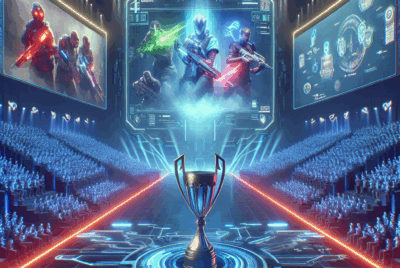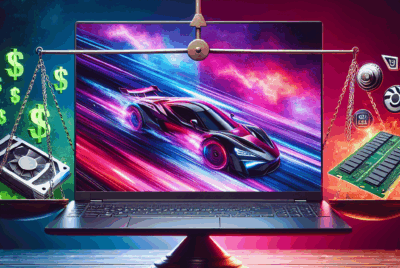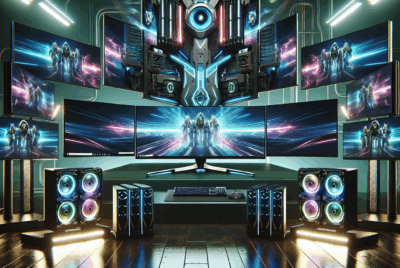What Is Ray Tracing, And How Does It Enhance Gaming? 1
Have you ever wondered why some video games look remarkably lifelike? This is where ray tracing comes into play. “What Is Ray Tracing, And How Does It Enhance Gaming?” delves into the transformative technology that brings a new level of realism to your gaming experience. By simulating the behavior of light, ray tracing creates stunning visual effects, from realistic shadows and reflections to intricate textures that make you feel like you’re inside the game world. You’ll discover how this innovative technique is revolutionizing the way you play, bringing unparalleled immersion to your virtual adventures. Have you ever wondered what makes modern video games look so incredibly realistic, with lifelike shadows, reflections, and lighting? The answer lies in a technology called ray tracing. But what exactly is ray tracing, and how does it enhance your gaming experience? Let’s dive into this fascinating subject and break it down in a way that’s easy to understand.

What is Ray Tracing?
Understanding Ray Tracing in Simple Terms
Ray tracing is a rendering technique used in computer graphics to simulate the way light interacts with objects. Unlike traditional rendering methods that use shading models to approximate how light behaves, ray tracing creates images by simulating the physical behavior of light. Imagine tiny rays of light originating from a light source, bouncing around, being absorbed, refracted, or reflected by various surfaces before reaching your eye (or the camera in a game). This results in incredibly realistic visuals.
A Brief History of Ray Tracing
Interestingly, ray tracing isn’t exactly new. The basic algorithms were conceptualized as early as the 1960s, but the enormous computational power required to perform ray tracing in real time has made it impractical for widespread use until recently. With advances in graphics processing unit (GPU) technology, particularly from companies like NVIDIA and AMD, real-time ray tracing has become more feasible and is now a significant feature in high-end gaming.
How Ray Tracing Works
Rays and Pixels
At its core, ray tracing involves tracing the path of light rays as they travel through a virtual environment. For each pixel on your screen, one or more rays are traced from the camera into the scene. These rays then interact with various surfaces, simulating phenomena like reflection, refraction, and shadowing.
Calculating Interactions
Here’s where it gets a bit technical but stay with me! When a ray hits a surface, calculations are performed to determine what happens next. Does the ray reflect, refract, or get absorbed? These decisions are based on the physical properties of the surface it encounters. For instance, a ray hitting a mirrored surface will reflect almost perfectly, while a ray hitting a piece of glass will refract, bending as it passes through.
| Interaction Type | Description |
|---|---|
| Reflection | Ray bounces off the surface, like a mirror. |
| Refraction | Ray bends as it passes through a transparent material. |
| Absorption | Ray gets absorbed, losing its energy. |
| Scattering | Ray bounces off in multiple directions, like on a rough surface. |
Shaders and Materials
Modern ray-traced games use complex shaders to mimic various material properties. These shaders help simulate how different surfaces interact with light. For example, wood and metal will reflect light differently, and water will refract light in a specific way. These shaders make the virtual world look incredibly detailed and realistic.

Enhancing Gaming: The Visual Impact
Realistic Lighting
One of the most noticeable improvements ray tracing brings to gaming is realistic lighting. Traditional lighting techniques often rely on pre-baked lighting maps and approximations, which can look good but not entirely convincing. Ray tracing, however, simulates how light naturally behaves, dynamically adjusting to changes in the environment, like the time of day or moving objects.
Shadows and Reflections
Ray tracing creates more realistic shadows and reflections. Traditional methods often use shadow maps and screen-space reflections, which can suffer from artifacts and inaccuracies. With ray tracing, shadows are softer and more natural, and reflections accurately represent the environment, adding a significant level of immersion.
Ambient Occlusion
Ray tracing also excels at ambient occlusion, which is the shading of surfaces that are close together but not directly lit by a light source. This technique adds depth and realism to corners, creases, and other detailed areas that traditional methods often miss.
Ray Tracing Hardware and Software
Hardware Requirements
Real-time ray tracing is computationally intensive, requiring advanced hardware. NVIDIA’s RTX series and AMD’s Radeon RX 6000 series are some of the latest GPUs designed to handle the demands of ray tracing. They come equipped with dedicated cores specifically designed for ray tracing calculations, known as RT cores in NVIDIA’s case.
Software and APIs
Several software APIs (Application Programming Interfaces) facilitate the implementation of ray tracing in games. DirectX Raytracing (DXR) is one such API developed by Microsoft. Vulkan, another popular graphics API, also supports ray tracing extensions. Game engines like Unreal Engine and Unity have integrated ray tracing support, making it easier for developers to implement this technology.

Popular Games Utilizing Ray Tracing
Control
“Control” by Remedy Entertainment is a third-person action-adventure game that showcases ray tracing technology beautifully. The game’s eerie, shifting environments benefit significantly from lifelike lighting and reflections, contributing to its immersive atmosphere.
Cyberpunk 2077
“Cyberpunk 2077” is another game that uses ray tracing to create a highly detailed, neon-lit futuristic city. The reflections on wet streets, the gleam of chrome surfaces, and the dynamic lighting all benefit from ray tracing, making the world feel alive.
Minecraft
Even “Minecraft,” with its simplistic, blocky graphics, has received a ray tracing update. The difference is astounding, with realistic lighting transforming the game’s aesthetic and bringing a new level of beauty to its low-poly world.
Challenges and Limitations
Performance Impact
While ray tracing significantly enhances visual quality, it comes with a performance cost. Even the most advanced GPUs can struggle to maintain high frame rates with ray tracing enabled. To address this, technologies like NVIDIA’s DLSS (Deep Learning Super Sampling) use AI to upscale lower-resolution frames, balancing quality and performance.
Development Challenges
For game developers, implementing ray tracing can be complex and time-consuming. Creating realistic shaders, balancing performance, and ensuring compatibility across hardware platforms are significant hurdles. However, as more tools and resources become available, these challenges are gradually being mitigated.
Current Limitations
Despite its advances, ray tracing is not a silver bullet. Some aspects of light behavior, like caustics (the patterns created when light shines through water), are still challenging to simulate accurately. Moreover, the technology is still in its early stages, meaning not all games support ray tracing, and those that do often offer it as an optional feature rather than a default setting.
The Future of Ray Tracing
Upcoming Developments
The future of ray tracing looks promising, with ongoing advancements in hardware and software. Next-gen consoles like the PlayStation 5 and Xbox Series X have incorporated ray tracing capabilities, bringing this technology to a broader audience.
Broader Adoption
As hardware becomes more capable and affordable, we can expect more developers to adopt ray tracing. Game engines are continually being optimized to support this technology, making it easier for even indie developers to create visually stunning games.
Potential Beyond Gaming
While our focus has been on gaming, ray tracing has applications beyond this realm. Industries like film, architecture, and virtual reality (VR) are also benefiting from this technology, further driving innovation and development.
Tips for Gamers
Setting Up for Ray Tracing
To enjoy the benefits of ray tracing, you’ll need compatible hardware. Investing in a modern GPU with ray tracing capabilities is essential. Furthermore, make sure your system’s cooling and power supply can handle the increased demand.
Balancing Quality and Performance
Experiment with settings to find the right balance between visual fidelity and performance. Enabling features like DLSS can help you maintain higher frame rates while still enjoying the benefits of ray tracing.
| Setting | Impact | Recommendation |
|---|---|---|
| Ray Tracing Shadows | Enhances shadow detail | Enable if you have a powerful GPU |
| Ray Tracing Reflections | Adds realistic reflections | Enable, but consider DLSS or lower quality |
| Global Illumination | Improves overall lighting | Use selectively to balance performance |
| Ambient Occlusion | Adds depth to small details | Enable for max realism |
Staying Current
Keep your drivers and game software up to date. Manufacturers frequently release updates that optimize ray tracing performance and compatibility.
Conclusion
Ray tracing is transforming the world of gaming, bringing unprecedented levels of realism and immersion. While it comes with challenges, the benefits it offers in visual fidelity are pushing the boundaries of what’s possible in digital experiences. As technology continues to advance, ray tracing will likely become a staple in both gaming and other industries, enhancing our virtual worlds in ways we’re only beginning to explore. So, next time you boot up a game and marvel at its stunning graphics, remember—you’ve got ray tracing to thank for that!




